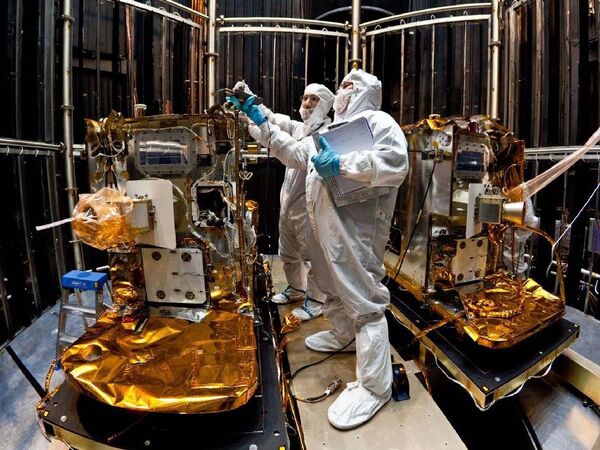Final preparations for the launch of the GRAIL (Gravity Recovery and Interior Laboratory) moon probe are underway at Cape Canaveral, but unfavorable weather conditions may delay Thursday's launch.
Twin satellites, each of the size of a washing machine, are to be launched for a journey of about four months to reach the Moon. The objective of the mission is to map the lunar gravitational field in order to gain insight into its internal structure and thermal history.
"We will not really understand the history of the moon until we know what the moon is like on the inside," said GRAIL principal investigator, Maria Zuber of the Massachusetts Institute of Technology.
"GRAIL will unlock lunar mysteries and help us understand how the moon, Earth and other rocky planets evolved as well," she said.
The twin spacecraft will spend 82 days in a low-altitude (50 km), near-circular, polar lunar orbit to perform high-precision range-rate measurements between them using a Ka-band payload.
The launch period will open on Thursday and close on October 19. During this period, NASA will have two liftoff opportunities each day, with an interval of some 40 minutes. Thursday's liftoff is scheduled for 8:37 a.m. Eastern time (12:37 GMT) or 9:16 a.m. Eastern time (13:16 GMT).
According to most recent weather forecasts, there is a 60% chance of unfavorable weather conditions during the launch window on Thursday and Friday.
The Delta II carrier rocket, which is to take the two identical satellites to the designated orbit, has almost a perfect history of 147 successful launches out of 149.
Among the most notable payloads of the Delta II are the 2003 Spirit and Opportunity Mars exploration rovers, the 2004 MESSENGER mission to Mercury and the 2007 Dawn mission to the two largest members of the asteroid belt - Vesta and the dwarf planet Ceres.
It was also used to send to space the infrared space observatories Spitzer Space Telescope (SST) and WISE, as well as the Kepler space telescope and the Swift multi-wavelength space-based observatory.

